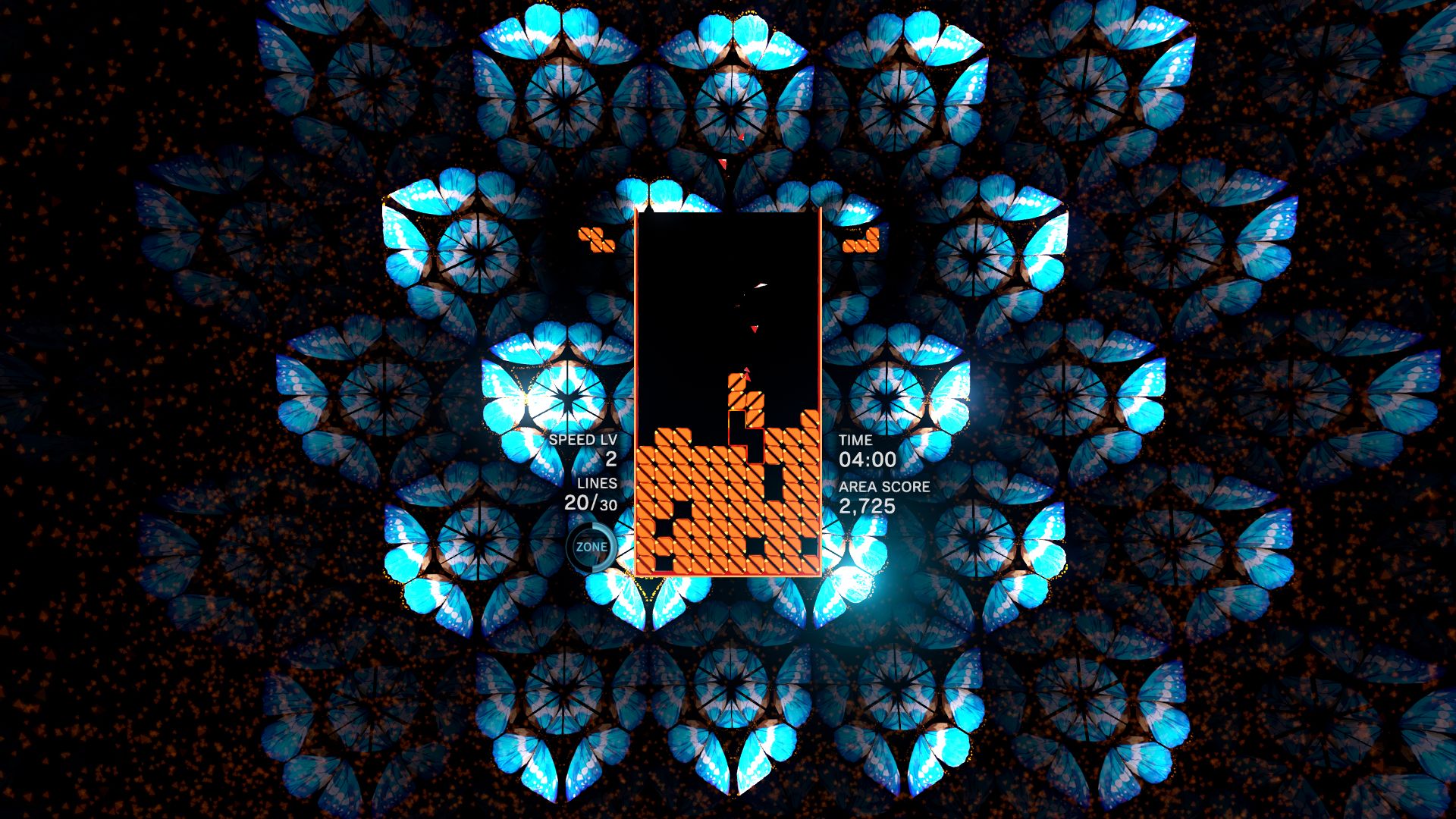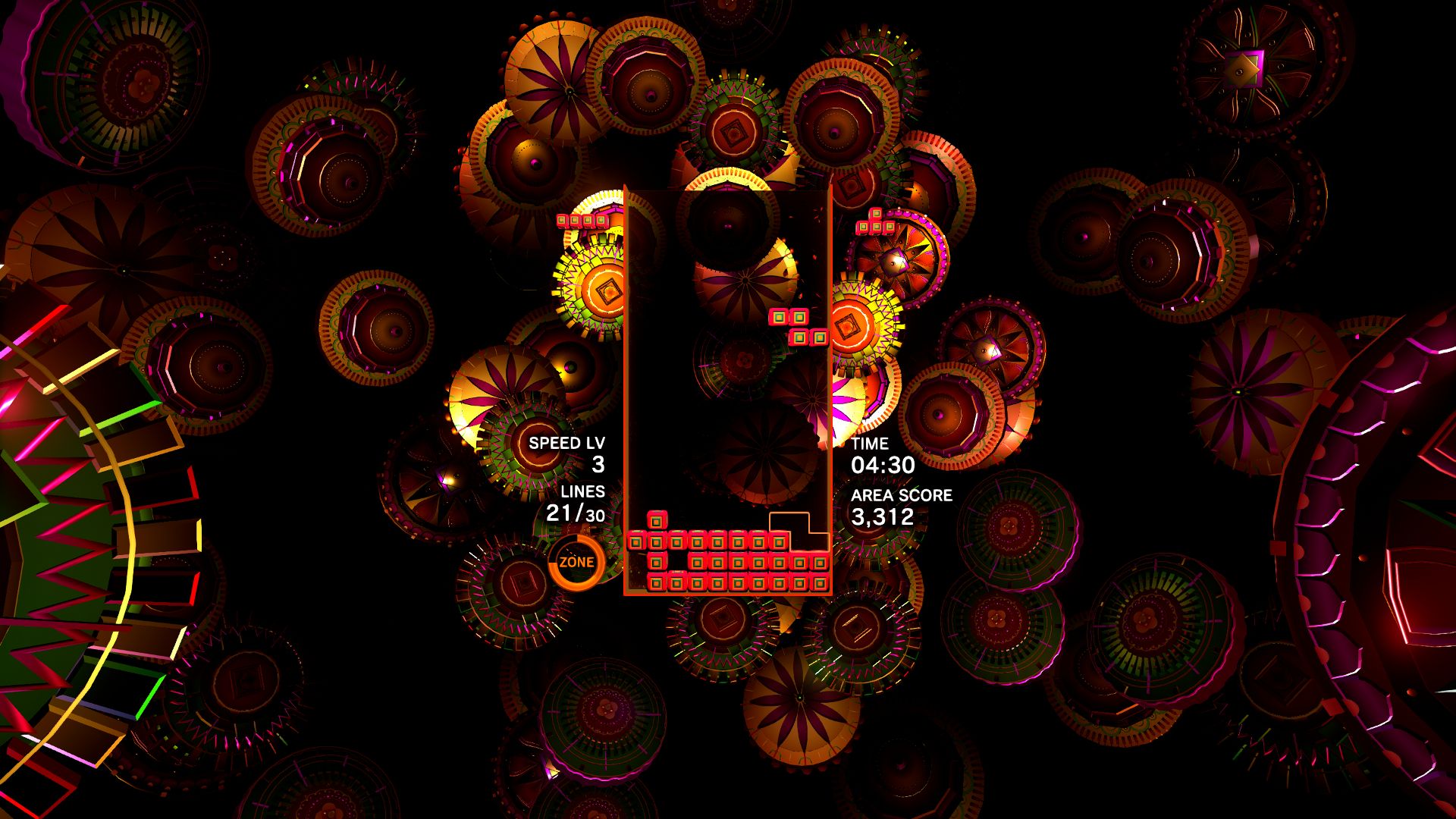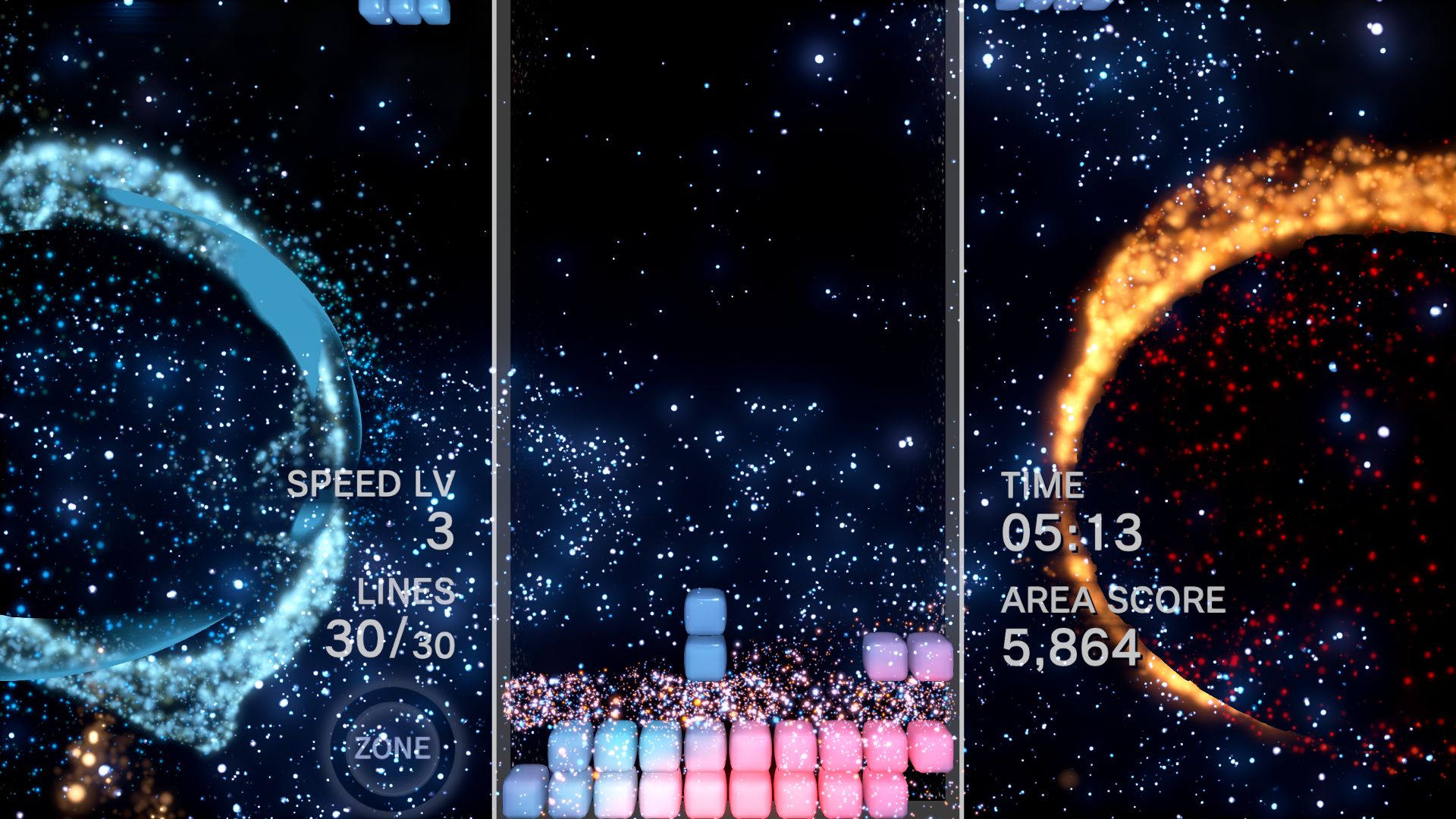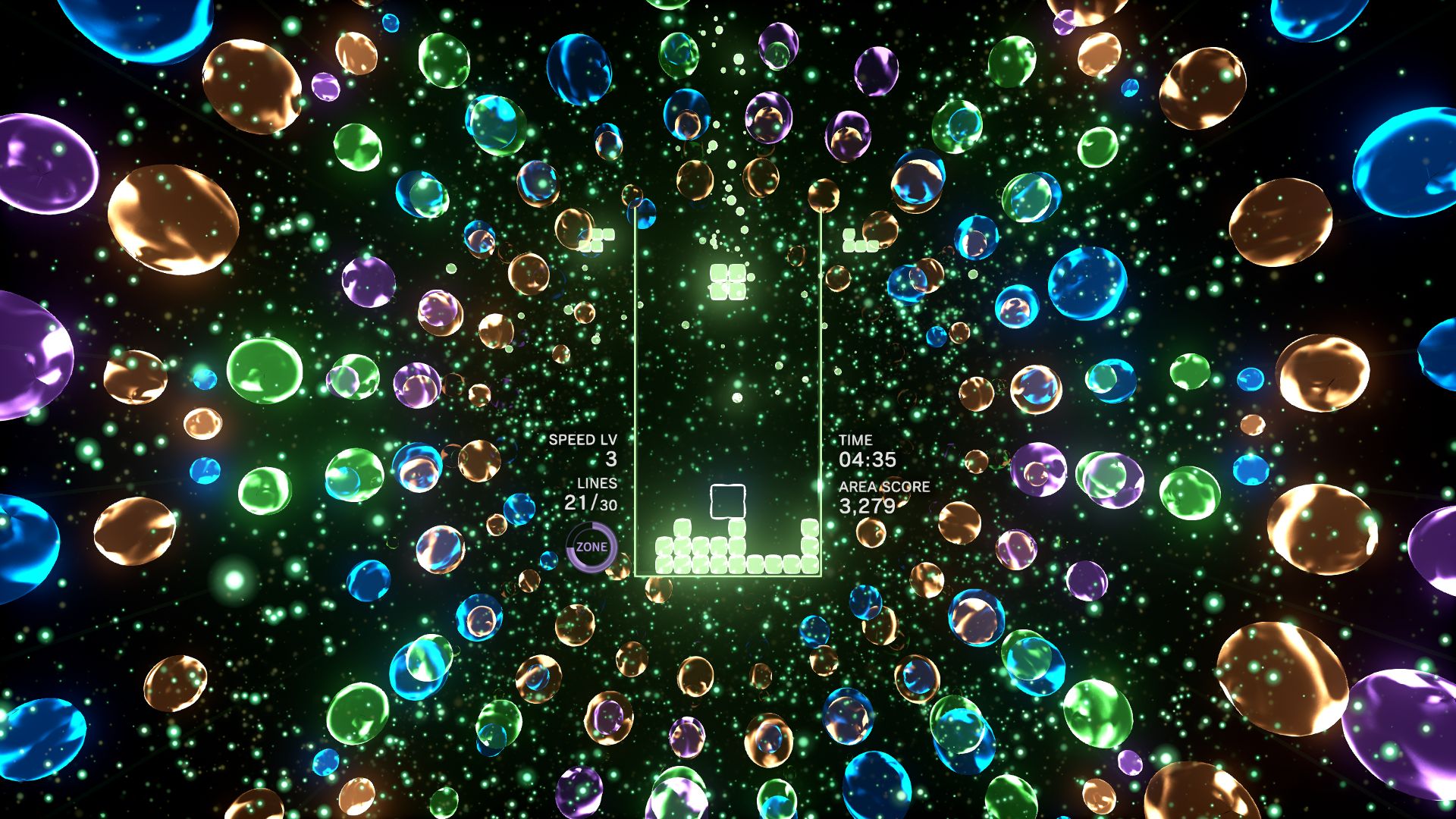Our Verdict
Whole new sensory layers make Tetris Effect the best version of an already timeless game.
PC Gamer's got your back
What is it A puzzle game elevated to an audiovisual experience.
Expect to pay $40/£32
Developer Monstars/Resonair
Publisher Enhance, Inc.
Reviewed on Core i5-8400, GTX 1060, 16 GB RAM
Multiplayer? No
Link Official site
Tetris is one of those games that is so ingrained in our pop-cultural fabric that I barely need to explain it, but I will. In Tetris you slot different blocks you slot together until they form an unbroken line, at which point the line dissolves and the blocks above collapse to fill the space. If you dissolve the maximum possible four lines in one move you score a Tetris. If your stack of blocks reaches the top of the play area, the game is over.
Despite its age Tetris also isn’t a game that inspires reminiscence. There are hundreds of off-brand Tetris games for every platform out there already. 'Why bother with another one?' I asked colleagues and friends after Tetris Effect came out on consoles last year.
An unapologetic Tetris disliker myself, I found it odd that everyone was acting as though this is some transcendental take on a simple puzzle game, but Tetris is one of those games you either bounce off of or reach levels of mastery in that speak of obsession, just like games such as Ikaruga or Dance Dance Revolution. Much has been said about how Tetris hits the perfect balance between challenge and skill in so many players that it induces flow, drawing you in. As someone with a spatial perception so bad Tetris was literally used to test me for brain damage, I could never attain the flow state or understand the supposedly universal appeal.
Tetris Effect however, has given me something I can understand, namely colours and sounds that combine in a way that pleasantly tickles some very primal part of my brain. There was never much of a reward for finishing lines in the original Tetris. I found its sound design stressful to the point where losing felt like punishment. Whenever I succeed in Tetris Effect, there’s always something new to see and hear.
My actions, from twisting and turning Tetrominos to arranging them in order, are now part of a whole musical and sound effect landscape. In one of the levels, the blocks look to be made of wood and make pleasant clunking sounds when set down, elsewhere they crinkle like crystal. Music and background visuals work together like a slowly building symphony with distinct movements—after a few rounds the visuals shift, revealing the level’s theme or adding to it in a meaningful way. Whales of light weave through invisible oceans in the background, fireworks glitter or hypnotic shapes multiply to the point they leave an imprint on your retinas.
There’s a very specific thing Tetris Effect reminds me of—an immersive art exhibit called teamlab Planets in Tokyo, where colourful shapes are projected onto water, you wander barefoot through a mirror maze beset with tiny lights and touch soft and warm things in the dark. It sounds like just the thing Tetris Effect’s designer and media design professor Tetsuya Mizuguchi would enjoy. Have a look on YouTube, it’s brilliant.

In addition to the visuals you can listen to the music swell. Several tracks involve thrumming techno beats that speed the game up literally and figuratively. It can be a lot to take in at first, and not every sound effect works equally well. Sometimes the visuals turn out to be distracting, or I can’t appreciate them as much as I want to because the game is going at a speed that won’t let me. But the changing nature of each of the thirty stages makes me want to explore each of them and find out what’s next. If the flow isn’t in the game itself, it’s in the strands of music you’ll be humming long after you’ve finally put the game down, a unique Tetris Effect all of its own.
Phat stacks
Tetris Effect uses universally pleasing images, not unlike a meditation app, no matter if it’s rain falling in a quiet forest or a view of earth from up above. I enjoyed the game most with a console-like setup: Only the biggest screen would do, and likely due to years of habit it felt odd to play it without a D-pad. Controller rumble also adds an extra layer to Tetris Effect experience that would be a shame to miss.
Tetris Effect freed me of the pressure to hunt for high scores. However, if that’s what you’re after, there are several additional modes, such as the combo mode, speed mode, and an endless mode that will let you have the Tetris experience that’s perfect for you. I’ve successfully been converted to the church of Tetris Effect, because there’s something for everyone to enjoy. Maybe Tetris Effect is just Tetris, but it masterfully does what so many other game remakes aim for—an experience suitable for seasoned players as well as beginners, which enhances what’s already good and offers new reasons to love a classic.




Whole new sensory layers make Tetris Effect the best version of an already timeless game.


